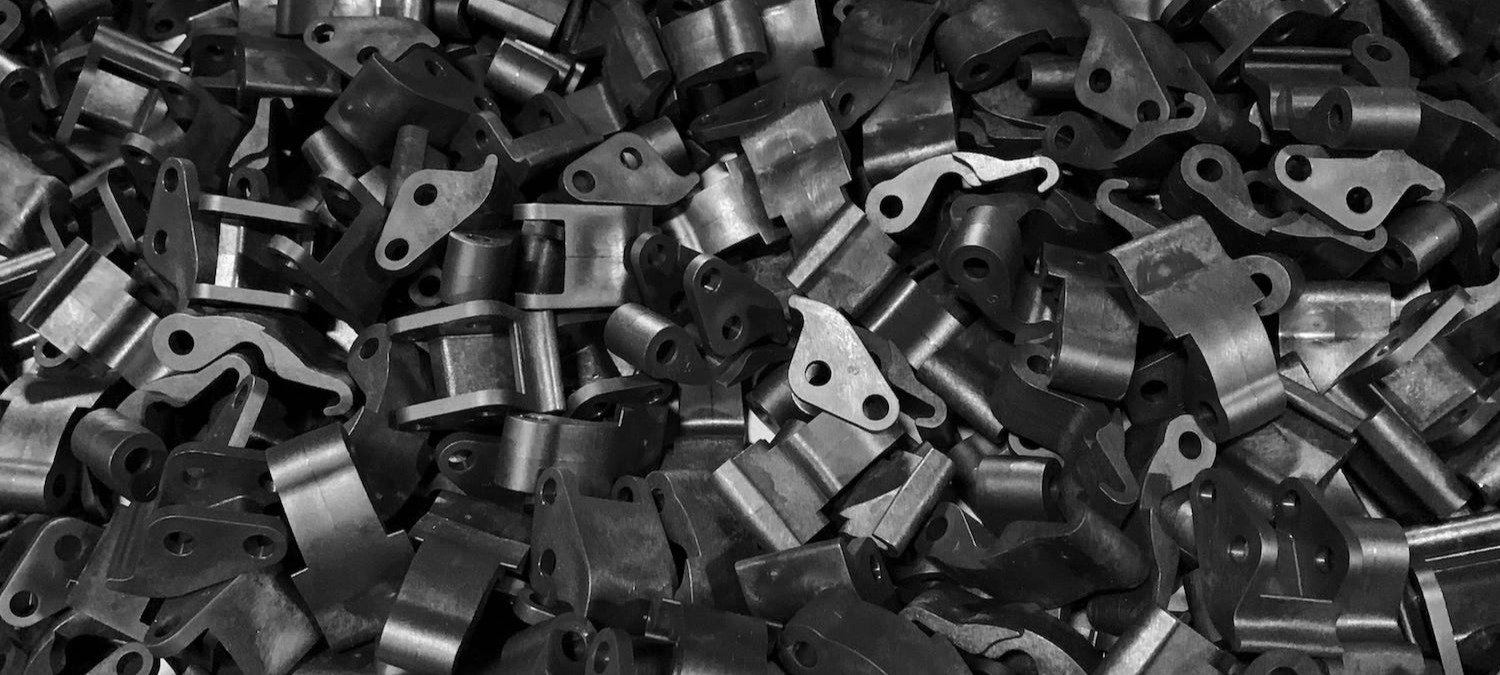When selecting a plastic material for injection molding, understanding the melting point is a critical factor that directly impacts manufacturability, durability, and performance.
Choosing a suitable material based on its melting temperature can mean the difference between a product that stands up to heat and pressure and one that doesn’t meet specifications.
This guide will break down the fundamentals of plastic melting points, why they matter, and how to use them effectively when evaluating materials for your next project. Whether you’re choosing materials for high-heat applications or considering the performance requirements for a specific part, this article will give you a clearer picture of which plastics best suit your needs.
What is a Plastic Melting Point?
A plastic melting point refers to the temperature at which a thermoplastic material transitions from solid to liquid. This change is crucial in determining how a material behaves during molding and impacts everything from processing temperatures to final product properties. A lower melting point generally results in easier processing and faster cycle times but may not be suitable for high-temperature applications.
In the context of injection molding, the melting point is a key factor that influences material flow, cooling times, and, ultimately, the quality and structural integrity of the finished product. Understanding the melting point helps manufacturers optimize production parameters and avoid common issues like warping, poor surface finish, or inconsistent part strength.
The Difference Between Melting Point and Heat Deflection Temperature
The melting point is the temperature at which a material transitions from solid to liquid. This point is straightforward—think of ice melting at 32°F; it goes directly from solid to liquid as it reaches the threshold temperature.
However, the heat deflection temperature (HDT) is a bit different. It refers to the temperature at which a material begins to deform under a specific load without actually melting. Generally lower than the melting point, the HDT is particularly important for applications where the material must retain its shape under heat and load, such as structural components.
But melting point and HDT are just the beginning when it comes to choosing the right plastic for your need.
Understanding Crystalline vs. Amorphous Plastics
Beyond melting point and HDT, it's essential to consider the structure of plastics, which can be either crystalline or amorphous. Each structure reacts differently to heat, impacting performance under varying conditions.
Crystalline plastics have a well-defined melting point, where they transition sharply from solid to liquid. This defined melting point allows crystalline plastics to maintain their rigidity until they reach this specific temperature. For reference, a commonly used crystalline plastic is polyamide (nylon).
Amorphous plastics, on the other hand, soften gradually as temperatures increase. Instead of a sharp melting point, they have a vicat softening temperature, determined by the temperature at which a flat-ended needle penetrates the material to a depth of 1 mm under a specific load. This characteristic makes amorphous plastics ideal for applications requiring flexibility and impact resistance but may limit their performance in high-heat settings. Examples of amorphous plastics include polystyrene (PS) and polycarbonate (PC).
Understanding these properties is essential for applications involving high temperatures or sustained loads. Crystalline plastics can retain their structure up to their melting point, while amorphous plastics may progressively soften as they reach their vicat softening temperature. Choosing between these material types depends on your application’s requirements, such as maintaining shape, rigidity, or flexibility under heat.
Why Plastic Melting Points Matter in Material Selection
Melting points are particularly important for manufacturability and end-use performance. For high-temperature applications—such as automotive components or electronics—selecting a plastic with a suitable melting point can ensure that the part maintains its integrity under operational stress (e.g., polyamide (nylon)).
Knowing the melting point can also help streamline the molding process. The higher the melting point, the more energy and time are required to mold the part, which can increase production costs. A plastic’s melting point can impact tooling selection, mold design, and even cycle time, making it a key consideration when planning a new project.
Plastic Melting Point Chart
For ease of reference, we’ve put together a comprehensive chart showcasing the melting points of various commonly used plastics. This chart will help you identify the right material based on the required thermal resistance and processing conditions.
| Type of Plastic | Melting Point in °C | Melting Point in °F | Common Applications |
| ABS (Acrylonitrile Butadiene Styrene) | 105-140 | 221-284 | Automotive parts, electronic housings, and household appliances |
| Polypropylene (PP) | 160-170 | 320-338 | Food containers, automotive parts, and consumer product packaging |
| Polyethylene (PE) | 115-135 | 239-275 | Bottles, plastic bags, and water tanks |
| Polycarbonate (PC) | 260 | 500 | Safety goggles, electronic enclosures, and optical discs |
| High Impact Polystyrene (HIPS) | 100-125 | 212-257 | Toys, household appliances, and food packaging |
| Nylon (Polyamide) | 190-350 | 374-662 | Gears, bearings, and automotive components |
| Polystyrene (PS) | 240 | 464 | Disposable cutlery, CD cases, and model kits |
| Polyetheretherketone (PEEK) | 343 | 650 | Aerospace components, medical implants, and high-performance mechanical parts |
Things to Consider When Using High-Temperature Plastics
More than standard plastics may be required for applications that require materials to withstand extremely high temperatures. High-temperature plastics like Polyetheretherketone (PEEK) or Polyphenylene Sulfide (PPS) are engineered to maintain mechanical properties and resist deformation at elevated temperatures.
These materials are ideal for aerospace, automotive, and electronics industries, where parts may be exposed to constant heat, friction, or harsh chemicals. In addition to their high melting points, these plastics offer superior dimensional stability, chemical resistance, and mechanical strength.
Choosing the Right Material for Your Injection Molding Application
When selecting the best plastic for your project, the melting point is a critical factor – but so are a few other things. Consider additional factors such as:
Chemical Resistance
Will the material be exposed to solvents, oils, or other harsh chemicals?
Mechanical Strength
Does the application require a high-tensile or impact-strength material?
Cost Efficiency
What is the budget for material costs and production?
Processing Requirements
Does the material’s melting point align with your molding equipment and production capabilities?
Working with Molding Dynamics for High-Temperature Plastics
Project success depends on your plastic choice, especially when it involves high-heat applications. At Molding Dynamics, Inc., we have extensive experience working with various high-temperature plastics, including PEEK, Polycarbonate (PC), and Nylons.
Our team can help you choose the best material for your specific needs, considering all performance and cost aspects.
“Choosing the right plastic is all about understanding the end-use requirements and balancing properties like heat resistance, strength, and cost. It’s a complex decision, but getting it right is key to achieving a successful final product– that’s what we specialize in, so if you’re questioning which product you should be working with, get in touch,” says Chuck Connors, Owner of Molding Dynamics, Inc.
Get Your Project Started with the Right Plastic Material Today
The right material selection can make or break your project’s success, especially in applications that require specific thermal properties. Whether you’re working with low-cost, low-melting-point plastics like HIPS or engineering-grade materials like PEEK, understanding the impact of melting points on your project is the first step toward achieving optimal results.
If you’re unsure which plastic is best for your needs, our team at Molding Dynamics is here to help. Contact us today for a material consultation or to discuss your project requirements.






